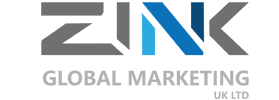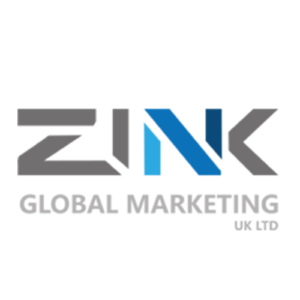The internet landscape is a bustling marketplace, and for businesses, standing out from the crowd can be a challenge. This is where PPC, or pay per click marketing, comes in as a game-changer. It’s a targeted marketing strategy that allows you to reach potential customers precisely when they’re actively searching for what you offer. But PPC goes beyond just throwing up a few ads and hoping for clicks. It’s a well-oiled machine with intricate parts, and mastering it can propel your business to new heights.
Understanding the Clickonomics: The Core of Pay Per Click Marketing
At its heart, PPC operates on a simple principle – you only pay when someone clicks on your ad. This stands in stark contrast to traditional advertising methods like billboards or television commercials, where you pay for a broad audience exposure with no guarantee of reaching your ideal customer. With PPC, you’re laser-focused on attracting highly relevant users who are actively interested in your product or service.
Imagine you run a bakery specializing in handcrafted sourdough bread. Instead of placing an ad in a local magazine that might reach people on a diet or simply not interested in bread, you can leverage pay per click marketing. Through Google Ads, you can create targeted ads that appear when someone searches for “sourdough bread near me” or “best sourdough starter recipe.” You’re putting your ad directly in front of potential customers who are already on the lookout for what you offer.
Google Ads and its Role in Pay Per Click Marketing
Think of Google Ads as the mission control center for your PPC campaigns. It’s a comprehensive advertising platform offered by Google that allows you to create, manage, and track your PPC efforts in one central location. It provides a user-friendly interface with a vast array of features to customize your campaigns and maximize your return on investment (ROI).
Here’s a breakdown of some key functionalities within Google Ads:
Campaign Creation: Define your goals – whether it’s driving website traffic, increasing phone calls, or generating online sales. Set a budget that aligns with your marketing objectives and target audience.
Keyword Research and Targeting: Identify the specific words and phrases (keywords) your ideal customers are likely to use when searching for products or services related to yours. Google Ads provides insightful tools like the Keyword Planner to help you discover relevant keywords and estimate their potential reach and cost. A good researched keyword have the power to write the fortune of your pay per click marketing.
Ad Building: Craft compelling ad copy that entices users to click. Highlight your unique selling propositions, showcase mouthwatering pictures of your sourdough bread, or promote your latest discount on starter kits.
Bidding Strategies: This is where things get interesting. You enter the competitive world of bidding, where you set the maximum amount you’re willing to pay each time someone clicks your ad for a particular keyword. Bidding strategies can be customized to optimize your budget and campaign goals.
Performance Tracking and Analytics: Google Ads offers robust analytics tools that provide valuable insights into your campaign performance. Monitor metrics like click-through rates (CTR), conversion rates, and cost-per-click (CPC) to gauge the effectiveness of your ads and identify areas for improvement.
The Intricate Dance of PPC: Keyword Research and Bidding Strategies
Keyword research is the foundation of a successful PPC campaign. It’s akin to deciphering the secret language your ideal customers use to navigate the online world. By understanding these keywords, you can tailor your ads to appear precisely when those terms are searched.
Here are some effective strategies for keyword research:
Start with Seed Keywords: Brainstorm broad keywords directly related to your business, like “sourdough bread,” “bakery,” or “baking supplies.”
Utilize Google’s Keyword Planner: This free tool within Google Ads helps you discover new keyword ideas, analyze search volume, and estimate potential costs.
Explore Competitor Research Tools: See what keywords your competitors are targeting to gain insights into their strategies.
Consider Long-Tail Keywords: These are more specific keyword phrases that tend to have lower competition and higher conversion rates. For example, “best sourdough starter for beginners” or “freshly baked sourdough bread delivery.”
Once you’ve identified a solid keyword list, it’s time to delve into bidding strategies. This is where you essentially place a “bet” on how much you’re willing to pay for each click on your ad for a specific keyword.
Here are some common bidding strategies in Google Ads:
Manual CPC Bidding: You have granular control over the maximum amount you’re willing to pay for each click.
Enhanced CPC Bidding: Google Ads automatically adjusts your bids to maximize conversions within your set budget.
Target CPA Bidding: Set a target cost-per-acquisition (CPA) and Google Ads will optimize your bids to acquire customers at that specific cost.
PPC Campaign Management
Effective pay per click marketing campaign management is critical to achieving your marketing goals. It encompasses setting clear objectives, selecting the right keywords, creating compelling ad copies, optimizing landing pages, and continuously analyzing performance data to refine and improve the campaign.
Wrapping Up!
As you navigate the exciting world of Pay Per Click Marketing, remember it’s a journey of continuous learning and optimization. Analyze data, test different strategies, and stay updated with Google Ads to keep your campaigns sharp. By mastering the art of PPC, you’ll connect with ideal customers, generate leads, and watch your business flourish in the ever-evolving digital landscape.




